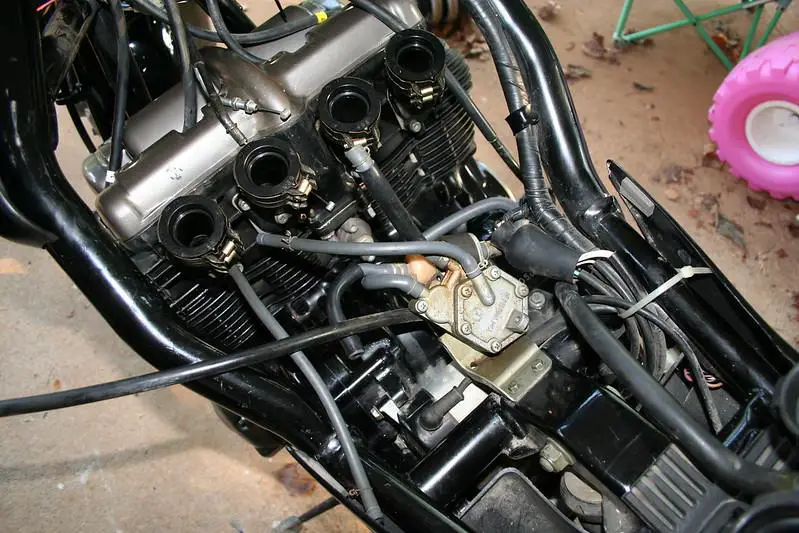The internal combustion engine of a car runs on fuel, but that’s not all – to get the most out of its performance it needs just the right amount of air in addition. That’s why understanding how much and what controls your vehicle’s air-fuel mixture is key for improving efficiency, as well as maintaining optimal functioning over time.
Achieving the ideal air-fuel mixture is critical for optimal vehicle performance. The car’s internal components – such as its PCM, fuel injector, O2 sensor, and more – each play a unique role in this process to provide optimum power delivery from start to finish.
If your engine sports a rich air-fuel ratio, look out for the effects on fuel economy. Knowing the ins and outs of this topic is essential in order to ensure optimal performance from your vehicle’s system.
What Controls The Air-Fuel Mixture In A Car

The internal components play an essential role in maintaining the air-fuel balance that’s vital for optimal engine performance. To guarantee consistently smooth functioning, it’s wise to understand which component manages this all-important ratio.
1. PCM (Powertrain Control Module)
The PCM is the brain of a vehicle’s operation, responsible for controlling multiple functions. By monitoring signals from sensors that measure air flow and fuel injection per cylinder, it can adjust levels to optimize performance in terms of economy and emissions output. This ensures an optimal mix so drivers get the best out of their vehicles with minimal environmental impact.
2. Air-fuel Ratio Sensor
In vehicles, air-fuel ratio sensors and oxygen sensors play a key role in controlling the exact fuel mixture. The former is beneficial for recognizing various levels of mixtures, but does not offer voltage signals when it becomes too rich or lean; instead sending feedback to the Powertrain Control Module (PCM). This data enables PCM units to adjust ratios accurately and maintain peak performance standards within engines.
3. Fuel Injector
Fuel injectors are the electronic control valve responsible for unlocking power and efficiency in any vehicle. Using automatic nozzles, they deliver petrol or diesel at exact proportions to ensure maximum combustion with minimal wastage. The ‘time signal sets how much fuel is sprayed into the engine while adjusting its air-fuel ratio accordingly – longer times create increased pressure over more expansive performance capabilities.
4. Throttle Body
The throttle body regulates the amount of air that is ingested into the engine. This determines how much fuel will be injected, resulting in a dramatic increase in power and REM. Depending on its type though, this can vary significantly between diesel or gas engines; while one utilizes regulation for its intake rate, the other depends entirely on foot input from drivers operating it.
5. Mass airflow sensor
To guarantee your engine performs optimally, it’s crucial to keep the air-fuel mix perfect. Most fuel-injected engines leverage a mass airflow sensor located between the throttle and filter housing for accurate data delivery that ensures an optimum balance of air and fuel is maintained by the Powertrain Control Module at all times.
6. Atmospheric Pressure (PA) Sensor
By harnessing the power of this sensor, an engine control module (ECM) can measure a car’s ambient air pressure and adjust its ignition timing accordingly. This allows for precise modifications in the air-fuel mixture needed to successfully handle varying altitude conditions.
7. ECU
The electronic control unit (ECU) plays a vital role in the car’s intricate inner workings, connecting to the Oxygen sensor and sourcing crucial data which is used to ensure an optimum air-fuel mixture. This allows for smoother running of your vehicle as it adjusts ignition timing and activates the fuel pump accordingly.
8. Oxygen Sensor
Keeping a car’s engine in peak performance requires the help of many working parts, especially one as critical and necessary as an Oxygen Sensor. It reads oxygen levels within the exhaust stream to estimate fuel variety for optimal air-fuel ratios throughout operation; taking two readings with 0.8-1 volts when rich in fuel and 0.1-0.2 volts when running leaner on oxygenation respectively so that proper adjustments can be made accordingly by communicating directly with your vehicle’s motor system.
Conclusion
The air-fuel mixture in a car is controlled by a variety of components. The air intake system brings air into the engine, while the fuel system pumps the correct amount of fuel into the cylinders. The spark plugs ignite the air-fuel mixture and the exhaust system removes the emissions. The ECU is the brain of the car and it is responsible for managing the air-fuel mixture to ensure optimal engine performance.

